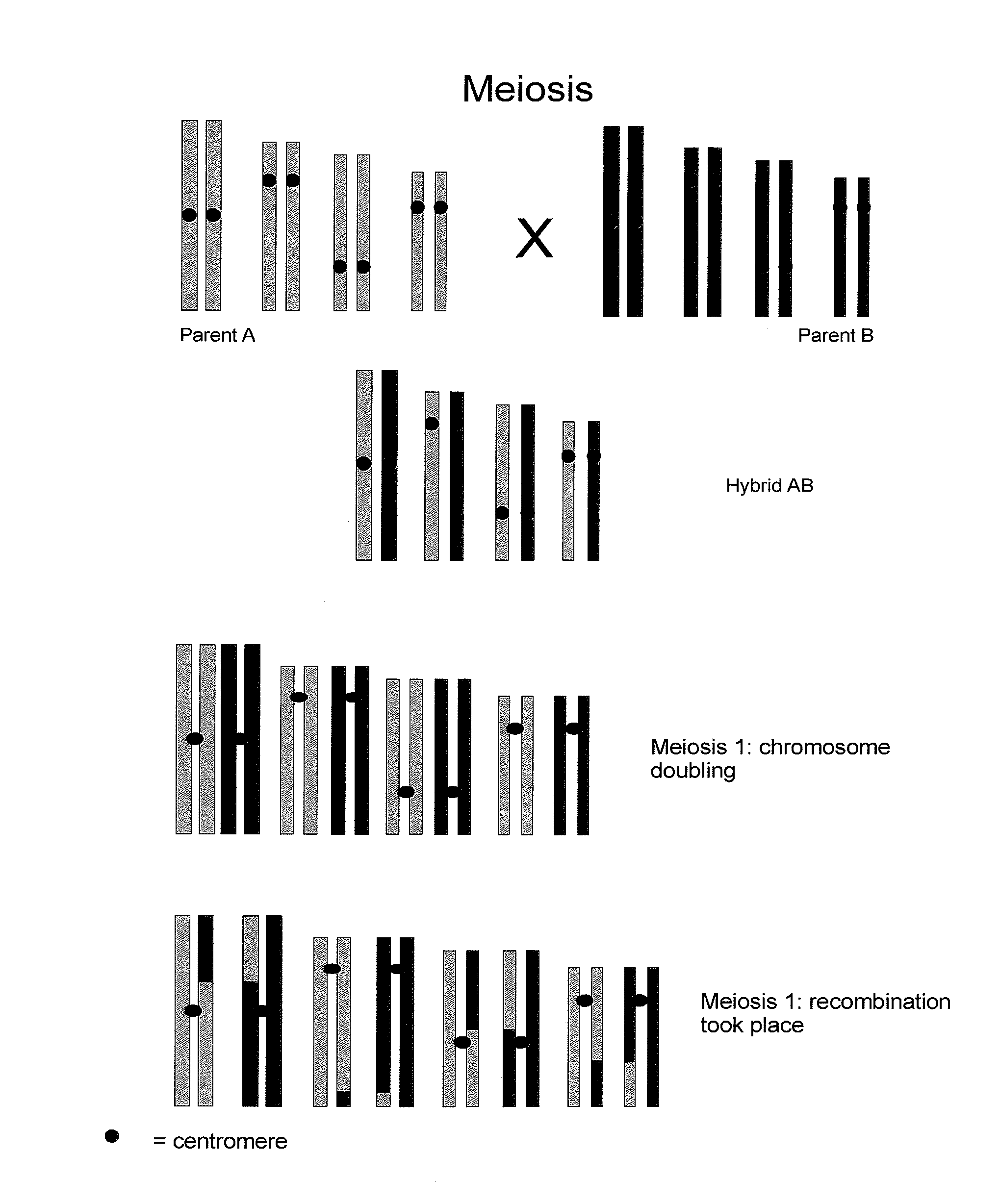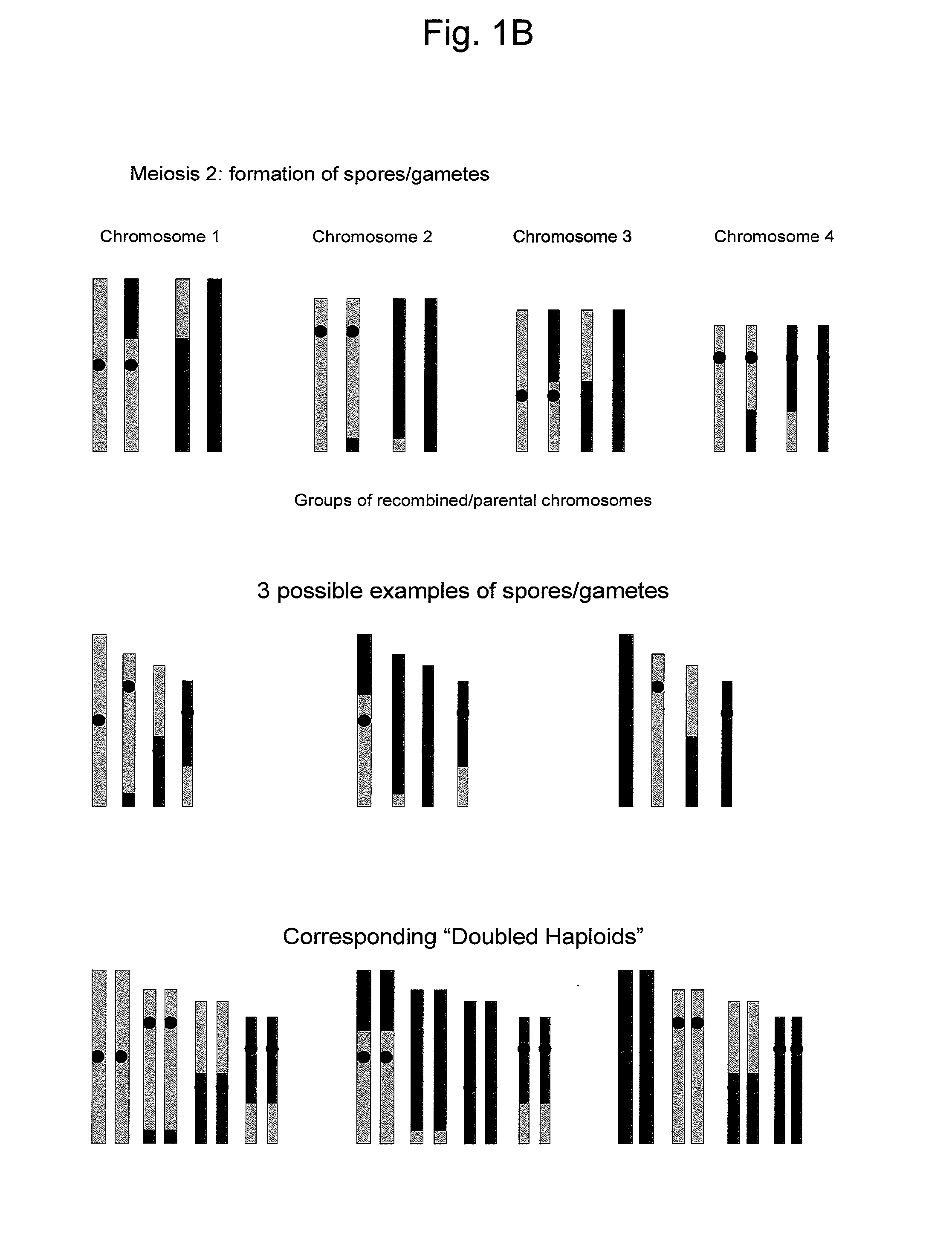Reverse Progeny Mapping
a technology of reverse progeny and mapping method, applied in the field of reverse progeny mapping, can solve the problems of difficult study of complex crop traits such as yield, stress tolerance, metabolite composition and related phenomena such as heterosis and combining ability, and failure of methods, so as to achieve the effect of systematically mapping the loci
- Summary
- Abstract
- Description
- Claims
- Application Information
AI Technical Summary
Benefits of technology
Problems solved by technology
Method used
Image
Examples
example 1
Production of SDR-0 Organisms in Maize by Means of Introduction of Elongatel
[0126] Incorporation of nucleic acids in the genome of maize are routine procedures and methods how to achieve this have been described in e.g. EP-801134, U.S. Pat. No. 5,489,520. EP-97114654.3 teaches Agrobacterium transformation of DSM6009 corn protoplasts.
[0127] Elongatel (Barell, P J and Grossniklaus, U. (2005) Plant J. 43, 309-320), a nucleic acid sequence that disturbs meiosis resulting in the omission of the second meiotic division was introduced into maize using the transformation methods described in the above patent publications. Thus, aberrant spores of the SDR type were obtained. The frequency of SDR spores that are formed sometimes differed between independent transformants as a consequence of different genomic sites of integration of the transgenic nucleic acid sequences.
[0128] The microspores or megaspores which were produced as a consequence of an SDR-event contain a diploid set of chromos...
example 2
Production of SDR-0 Organisms in Maize by Low Temperature or Nitrous Oxide Gas Treatment
[0132] The frequency of SDR spores was enhanced by treatment of maize plants with low temperatures or by applying nitrous oxide gas as described by Kato, A and Birchler, J A (2006) J. Hered. 1, 39-44.
[0133] As a consequence of application of low temperatures or nitrous oxide treatments, numerous microspores respectively megaspores, were produced which are of the SDR-type. The spore population was enriched for the presence of SDR microspores by using flow cytometry or fluorescence activated cell sorting based on the fact that SDR microspores are larger in size as compared to normal haploid microspores. The microspores or megaspores which were produced as a consequence of an SDR-event contain a diploid set of chromosomes. These diploid microspores or megaspores are the starting material for producing SDR-0 regenerants. Haploids in maize were routinely obtained from microspores as described in Exa...
example 3
Identification and Characterization of SDR-0 Organisms
[0137] The SDR-0 maize plants from Examples 1 and 2 can be distinguished from DH plants (or from FDR (first division restitution) plants) that did not undergo SDR because they are partially heterozygous but have homozygous centromeric regions. Using the AFLP analysis as described in Example 5 for cucumber, DH-0 maize plants that did not undergo SDR will show an AFLP marker pattern without heterozygous areas, while DH maize plants that have undergo SDR will show heterozygous areas in the AFLP marker pattern. Subsequently, map construction and statistical analysis was performed as described in Example 5 for cucumber.
PUM
| Property | Measurement | Unit |
|---|---|---|
| Temperature | aaaaa | aaaaa |
| Size | aaaaa | aaaaa |
| Content | aaaaa | aaaaa |
Abstract
Description
Claims
Application Information
 Login to View More
Login to View More - R&D
- Intellectual Property
- Life Sciences
- Materials
- Tech Scout
- Unparalleled Data Quality
- Higher Quality Content
- 60% Fewer Hallucinations
Browse by: Latest US Patents, China's latest patents, Technical Efficacy Thesaurus, Application Domain, Technology Topic, Popular Technical Reports.
© 2025 PatSnap. All rights reserved.Legal|Privacy policy|Modern Slavery Act Transparency Statement|Sitemap|About US| Contact US: help@patsnap.com



